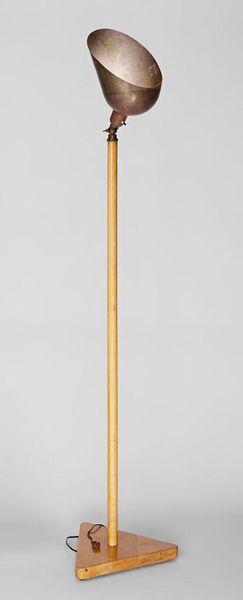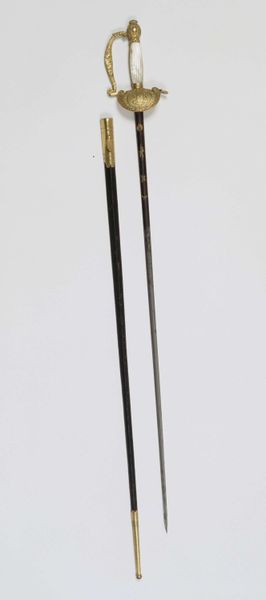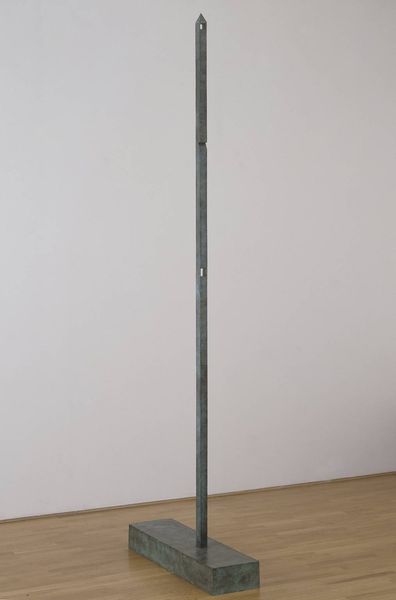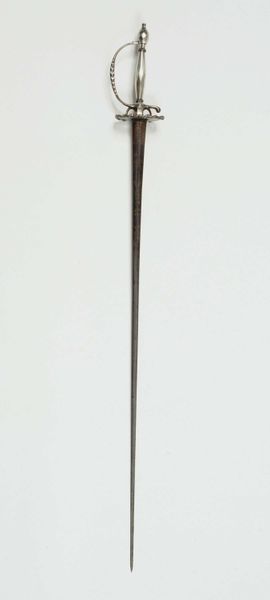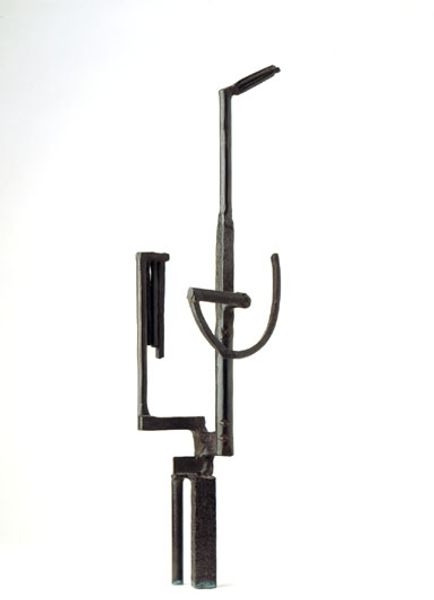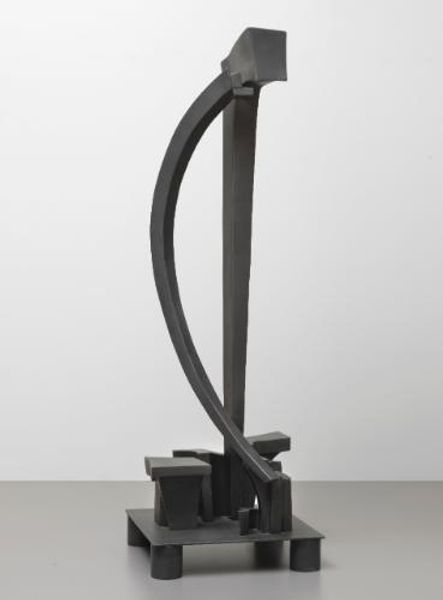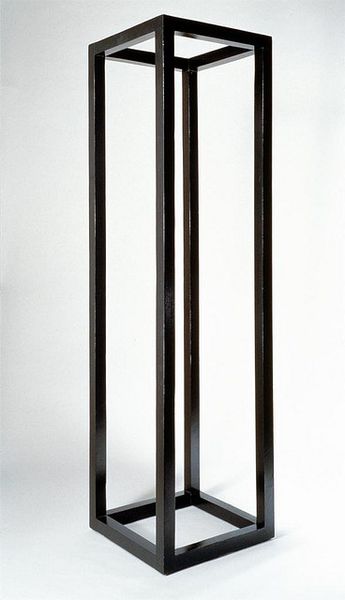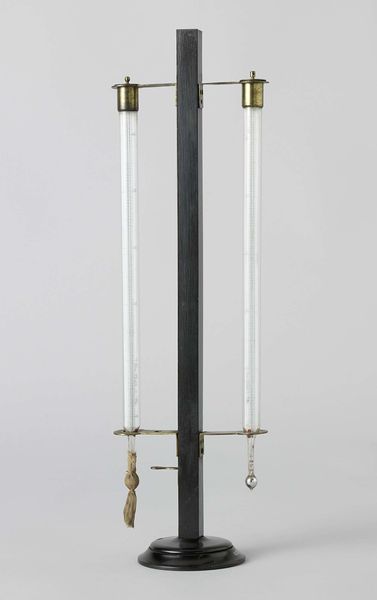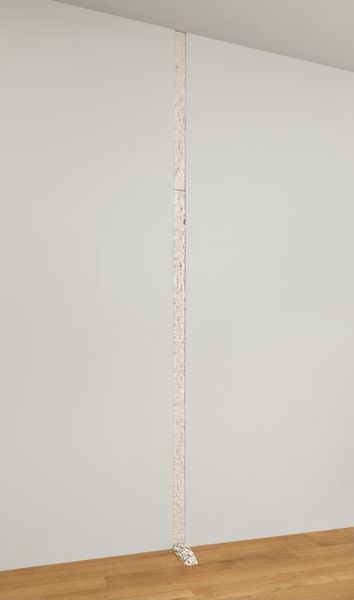
#
clear focal point
#
displayed
#
3d printed part
#
product displayed
#
3d printing
#
virtual 3d design
#
shelf placement
#
3d shape
#
framed image
#
white focal point
#
united-states
Dimensions: 32 x 11in. (81.3 x 27.9cm)
Copyright: No Known Copyright
Curator: And now, let’s consider this intriguing “Lamp,” attributed to William Edmond Lescaze around 1933. Editor: My first thought is that it seems strikingly modern, even now. The sleek metal and bold red shade have such a crisp and optimistic feel. It almost feels… defiant? Curator: It's a great example of the streamlined aesthetic that Lescaze, a pioneer of modern architecture in the U.S., championed. Notice how the forms—the sphere, the cylinder, the cone—are reduced to their essence. The metal arm looks functional but the overall effect has a symbolic quality. The sphere grounded to the desk like a plumb bob suggests balance. Editor: It does invoke this sense of progress, certainly. Looking closer, one has to ask about its functionality – where and how was this kind of light intended to be used? What kind of space did it envision? Given the period, was it speaking to a broader cultural shift toward efficiency and technology transforming domestic and professional lives? Curator: I agree; such simplification certainly suggests a yearning for efficiency but maybe even control, even at the level of daily living. The Machine Age left its indelible mark. There’s a visual language emerging—an optimism intertwined with anxieties about modernity's trajectory. Editor: The color, though! The almost aggressive red juxtaposed with the cool metal… is this purely decorative, or is there a kind of commentary being offered, considering the sociopolitical landscapes during the lamp’s production? There’s a deliberate artificiality in how that bold color pops out, detached from organic referents. It feels performative and potentially rebellious in its contrast to the more muted palette of traditional domestic spaces. Curator: Yes, that high-key color is crucial, like a warning sign! Think also of the red used by Constructivists for ideological purposes. It could be understood in that light. There's a radical reimagining happening here, a symbol in its own right, suggesting the light itself is something other than illumination, but an awakening to new ideals. Editor: Fascinating. Examining its historical placement while understanding the bold choices pushes it beyond simple utility, casting shadows – both literally and figuratively – across debates on modernity, industry, and the aesthetics of progress. Curator: Precisely. What begins as functional transforms, through art and symbolic form, into cultural commentary.
Comments
No comments
Be the first to comment and join the conversation on the ultimate creative platform.

